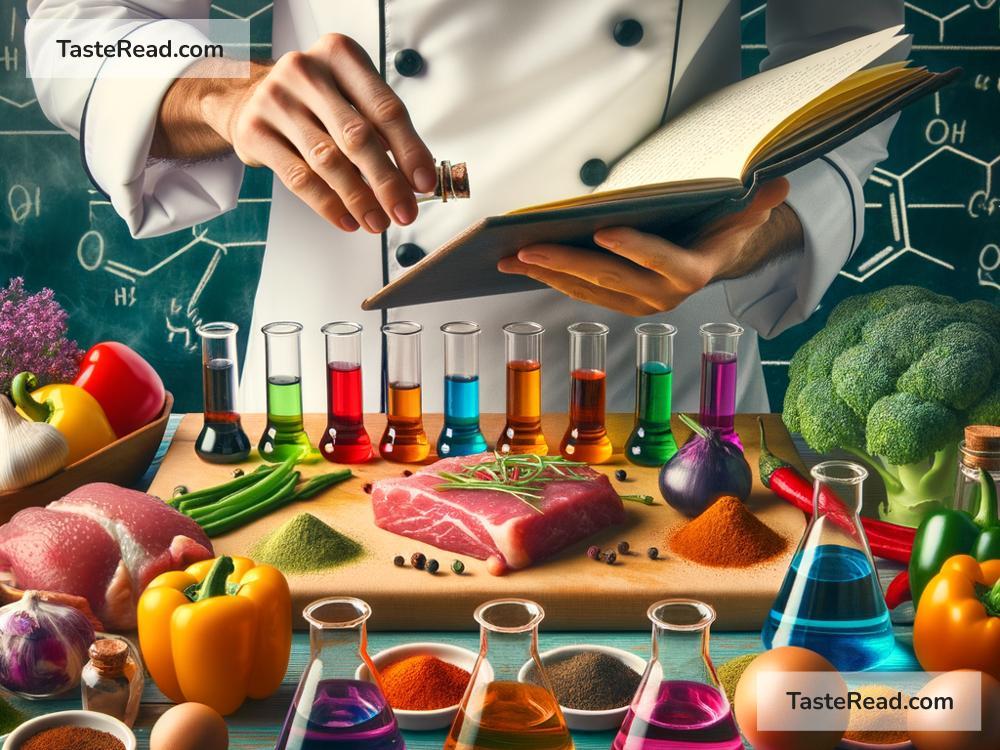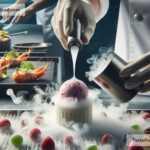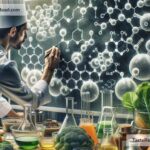The Science of Cooking with Chemical Understanding: Techniques and Tips
Cooking isn’t just about following recipes—it’s much like chemistry in action. When you boil an egg, bake bread, or grill meat, countless chemical reactions are taking place to transform raw ingredients into the delicious meals we know and love. By understanding the science behind cooking, you can improve your techniques and create better dishes. Let’s dive into the basics of the science of cooking and explore some tips to elevate your culinary game!
Kitchen Chemistry: How Food Transforms
Food is made up of proteins, carbohydrates, fats, and water. When you cook, heat, acids, or other methods trigger chemical changes in these molecules, resulting in new textures, flavors, and appearances. Here are a few important concepts in kitchen chemistry:
1. Heat and Cooking Reactions:
– Cooking with Heat – The Maillard Reaction: Have you noticed how browned bread smells amazing or how roasted meats have a rich, golden crust? This comes from the Maillard reaction, a chemical process where amino acids (from proteins) and sugars react under heat to produce flavorful compounds. A hotter pan usually gives better browning, but you need to avoid burning the food!
- Caramelization of Sugars: Caramelization happens when sugar is heated to a high temperature. Whether it’s in desserts or cooking vegetables like onions, caramelized sugar adds sweetness, depth, and golden color to the dish.
2. Proteins: How They Change with Heat:
Proteins in food, like those in meat, eggs, or dairy, can change their shape when heated, a process called “denaturation.” For example, egg whites turn solid when cooked because their proteins tangle and form a firm structure. This is why gentle heat helps when cooking delicate proteins—too much can make them dry or rubbery.
3. Starches and Carbohydrates:
Starches (from pasta, potatoes, rice, etc.) absorb water and swell when heated, giving us creamy textures in soups or firm bites in cooked grains. Knowing how starches behave can help you find the right cooking method—like rinsing rice to avoid clumping or boiling potatoes to create a fluffy mash.
4. Acids and Bases in Cooking:
Acids, such as lemon juice, vinegar, or yogurt, add tangy flavors and can tenderize proteins. A marinade with an acidic component is perfect for tenderizing tough cuts of meat. On the other hand, baking soda (a base) can enhance browning when creating crispy baked goods.
Cooking Techniques Backed by Science
Now that we understand the basics of kitchen chemistry, let’s explore practical techniques using this knowledge:
1. Perfect Pasta: Save Salty Water
When cooking pasta, salt the boiling water generously—like seawater! Why? Science shows that salt enhances flavor by being absorbed into the pasta as it cooks. Without salty water, pasta might taste bland even with a strong sauce.
2. Toast Your Spices for Flavor Boost
Dry toasting spices, such as cumin seeds or peppercorns, releases oils and creates deeper, richer flavors. Heat activates chemical compounds that make spices smell and taste better. Try it next time for vibrant dishes.
3. The Secret to Tender Meats
Slow cooking or braising tougher cuts of meat helps break down connective tissue (collagen). Over time, collagen turns into gelatin, creating juicy, succulent results. Use low heat—rushing the process will lead to tough meat instead of tender bites!
4. Rest Your Steak
Ever wondered why many recipes suggest letting cooked meat “rest”? After cooking, resting meat allows its juices to redistribute, meaning a juicier bite when you serve it. Cutting it too soon often leads to dry steak and juices running all over your cutting board!
5. Baking Magic with Temperature
For soft cookies, bake at a lower temperature and remove them before they feel solid—they’ll firm up as they cool. For crunchy cookies, bake at higher temperatures for longer. Temperature controls how sugars caramelize and proteins set.
6. Achieving Crispy Skin
Want crispy chicken skin or roasted vegetables? Dry surfaces and high heat create the best browning. Pat your ingredients dry with a paper towel before cooking, and avoid overcrowding the pan!
Common Cooking Mistakes and Their Fixes
Even with science on your side, mistakes happen. Here’s how to fix a few common problems:
1. Over-salted Soup: If a soup or stew tastes too salty, adding a raw potato can help absorb some excess salt. Alternatively, dilute it with water or unsalted stock.
2. Burnt Edges While Baking: Cover baking items in foil for part of the cooking process, especially delicate pastries, to avoid over-browning.
3. Dry Cake: Dry cake often stems from overbaking or improper measurements. Use a kitchen thermometer to check your oven temperature and measure ingredients precisely for better results.
Science Equals Better Cooking
Cooking isn’t magic—it’s science that you can understand and master! By learning how food behaves under different conditions, you’ll be able to make smart decisions in the kitchen and troubleshoot problems easily. Whether it’s crisping chicken skin, creating tender meat, or making perfectly chewy cookies, these techniques will help you cook with confidence.
Experiment, observe, and enjoy the process. The better you understand food and its chemistry, the more exciting your cooking becomes. So next time you prepare a meal, think about the science happening behind the scenes. You’re not just cooking—you’re creating flavorful chemistry!
Happy cooking!


